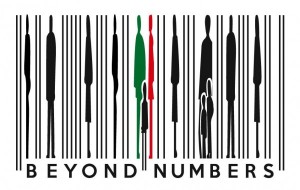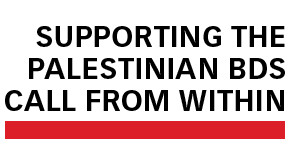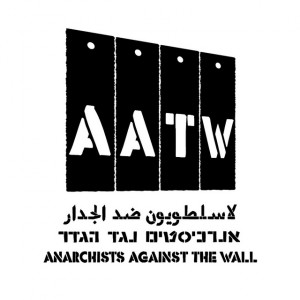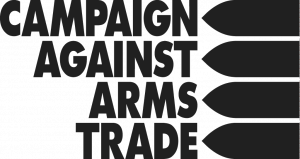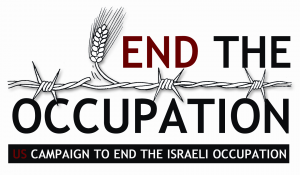Stories repeat. Again we hear reports from doctors of Israel firing experimental weapons at Gaza’s civilians, just like we did in 2009, and in 2006.
What make these reports largely based on solid ground are the repeat of patterns (2006, 2009, 2014), information from military and company websites, detected transport routes of the components involved, and observed actions by companies involved in the making of these weapons.
In 2006, Richard Silverstein investigated:
Reading this passage from a Navy League of the U.S. website (the page no longer exists), one sees that DIME was practically designed with densely-packed urban Gaza in mind:
Under a project titled Dense Inert Metal Explosive (DIME), Dahlgren scientists are studying the effects of adding dense metallic particles, such as tungsten, to a high-explosive chemical mixture. According to tests performed at Eglin Air Force Base, Fla., the detonation of such a mixture shows increased deadly effects at a slightly greater range from the center of blast, contrasted with conventional explosives. But the DIME mixture’s lethality falls sharply a short range from the blast center, reducing the chance of destroying something other than the intended target.
The DIME concept is particularly interesting to the Navy for use in urban areas. Cook explains: “a normal blast-frag warhead has high-explosive putting fragments out. You get a high probability of kill, but it lasts for quite a distance. That means that if you were to drop a blast-frag weapon in the middle of a city block you would be doing a lot of damage in an urban area,” which is not always the effect U.S. forces want to achieve. With DIME, the blast effect equals that of a blast-fragment weapon, but the chances of collateral damage appear to be substantially less, said Cook.
More such sharp observations from the case of DIME use in Gaza in 2006 in Israel Tests New Highly Lethal, Cancer-Causing Tungsten Bomb in Gaza
Transport routes? In 2009, the Dutch group “Stop Wapenhandel” reports in Bombs on Gaza, business for The Netherlands and Belgium:
The Israeli army in Gaza is using weapons partly produced in Belgium and The Netherlands. Moreover Dutch and Belgian airports are being used for the transfer of weapons and ammunition from the United States to Israel without scrutiny against the EU arms export criteria. As Belgian foreign minister De Gucht called for a ceasefire in Gaza and Dutch foreign minister Verhagen offered support in controlling arms smuggling to Hamas one should expect an intensified control on arms exports to Israel. This is not the case. Belgium en The Netherlands do not apply the EU arms export criteria consistently and the transfer of military goods from the US to Israel, notably ammunition, is not controlled at all.
Israel is one of the world’s largest arms importers. Dutch policy on arms trade with Israel is restrictive; export licences are ‘in principle’ not granted for Israel, in line with criteria two (human rights), three (internal conflict) and four (regional conflict) of the European Union arms exports criteria. At the same time arms components are exported to third countries which re-export to Israel. Dutch Stork is the sole supplier oflanding gears for Apache attack helicopters delivered by the US to Israel. DSM exports armour that ends up in armoured personnel carriers and vehicles for the Israeli Defence Forces.In Flanders (B) several arms and components exports have been denied licences in 2008. Exports to the Israeli arms industry however were no problem at all. Flemish OIP, daughter of Israeli Elbit, could deliver materiel for snipers for example. The Wallonian part of Belgium licensed several arms exports to Israel, including material for ammunition and components for armoured personnel carriers. The Brussels province has never denied any export licence.
Arms transfers to Israel through Belgium and The Netherlands, notably by plane from the US, are not controlled at all. In 2006 and 2007 alone 56 million bullet parts, 3 million ammunition and tens of thousands of cartridges, smoke shells and fuses from the United States were transferred though Dutch main airport Schiphol on their way to the IDF. Despite promises to Parliament the Dutch government has not given any information yet on 2008 figures. After Israeli airline El Al transferred its main activity to the Liege airport of Bierset, it can be assumed that the majority of the US arms transports to Israel has shifted to Belgium. Although the Wallonian government does not give any figures about the transfer of military goods at all, it is known that El Al has 2 to 3 cargo flights from the US to Israel through Bierset every day. If the EU arms export criteria would be applied to these transfer flights, they would most probably not be permitted, as the United States arms export policy towards Israel is known to be much less restrictive than that of Belgium and The Netherlands.
Are there multiple routes? Were some of the weapons used in Gaza shipped to Israel from the UK? In 2009, More4 News (the channel no longer exists) featured this item:
[youtube width=”640″ height=”360″]https://www.youtube.com/watch?v=lzF99fsv3Cc[/youtube]
I’ve been digging around at the US air base at Lakenheath in Suffolk. Could be a key connection between the vast base and the war in Gaza. In particular, the use of controversial DIME munitions said to be used in Gaza, causing wounds to the human body the like of which doctors have not seen before. All the documentation points to Lakenheath as the key point of US-Israeli contact — we know the Israelis bought 1,000 bombs of the type that could be DIME just as they were preparing for Gaza in the autumn.
As ever, no accountability. Nobody knows what the full Gaza-Lakenheath connection is — not even our government. Even banned cluster bombs could well still be there on base because the US and Israel have not agreed to ban them.
European traderoutes. No surprise. Not really. Because …
In 2006 TNI examined the development of the EU Security Research Programme (ESRP) and the growing security-industrial complex in Europe being set up to support it:
The story of the ESRP is one of “Big Brother” meets market fundamentalism. It was personified by the establishment in 2003 of a “Group of Personalities” (GoP) comprised of EU officials and Europe’s biggest arms and IT companies who argued that European multinationals are losing out to their US competitors because the US government is providing them with a billion dollars a year for security research. The European Commission responded by giving these companies a seat at the EU table, a proposed budget of one billion euros for “security” research and all but full control over the development and implementation of the programme. In effect, the EU is funding the diversification of these companies into the more legitimate and highly lucrative “dual use” sector, allowing them to design future EU security policies and allowing corporate interests to determine the public interest.
The planned Security Research Programme raises important issues about EU policy-making and the future of Europe. Europe faces serious security challenges: not just terrorism, but disease, climate change, poverty, inequality, environmental degradation, resource depletion and other sources of insecurity. Rather than being part of a broader strategy to combat these challenges, the ESRP is part of a broader EU counter-terrorism strategy almost singularly orientated to achieving security based primarily on the use of military force and the demands of law enforcement. Freedom and democracy are being undermined by the very policies adopted in their name.
And that story has been developing since then too …
[2011] Lobbying Warfare, the arms industry’s role in building a military Europe (pdf) http://corporateeurope.org/sites/default/files/publications/ceo_armslobby_en-v2.pdf
[2012] EU as a driving force of armament, analysis of the growing EU (pdf) http://www.pana.ie/download/EU-DriverArmament_Wagner_GUE_Nov2012.pdf
[2013] Guns, debt and corruption http://www.tni.org/briefing/guns-debt-and-corruption
[2014] Eurodrones Inc, how EU taxpayers are subsidising the drone industry (pdf) http://www.tni.org/sites/www.tni.org/files/download/011453_tni_eurodrones_inc_br_3e.pdf

